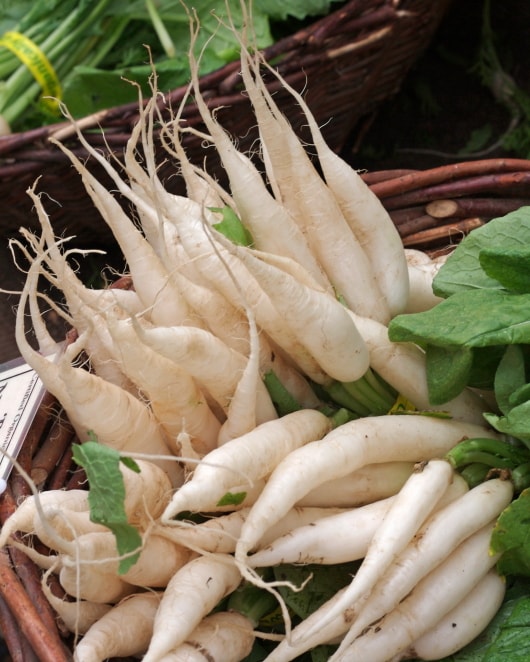
Hindi Name: Mooli
Radish is a root vegetable that was native to the Europeans. They are white in color and are mainly used in salads but can be cooked or steamed as well. It is mostly grown during the cool season and has a peppery taste. Some radishes are grown for their seeds and some for their oil.
Types
Broadly they are categorized into four types, summer, fall, winter and spring. They vary in their shapes, colors, and size. They could be pink, red, white, gray or yellowish in color. Summer radish are sometimes called European or spring radishes as well, when they are grown in a slightly cooler temperate. A few varieties of summer radish are April Cross, Bunny Tail, champion, cherry belle and plum purple. Winter varieties are also called black Spanish that are both round or elongated. There is also a third variety called seed pod. The seeds that grow in siliques are sometimes used as a crunchy addition to salads.
Usage
The raw flesh has a crisp texture and a pungent, peppery flavor. It can be eaten raw, as a whole in salads or cooked into vegetables by steaming or frying. In India, the root is grated and mixed with spices to make a stuffing into the Indian bread. Radish bods are eaten raw in salads or in stir-fries in many parts of Asia. Radish leaves are sometimes used in recipes, like potato soup or as a sautéed side dish.
Nutritional Value
1. Radish contains and anti-oxidant compound called sulforaphane that plays an important role against prostate, breast, colon and ovarian cancers.
2. Fresh roots are rich in vitamin C that is a powerful water soluble antioxidant that is required by the body for synthesis of collagen. It helps the body scavenge harmful free radicals, prevention from cancers, inflammation and help boost immunity.
3. It also contains folates, vitamin B-6, riboflavin, thiamin and minerals such as iron, magnesium, copper and calcium.
Note: Don’t use radish if you have gallstones.
[“source-ndtv”]










